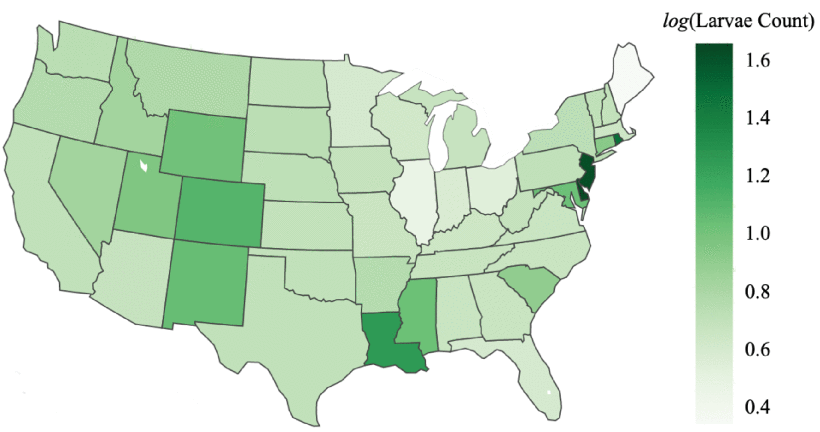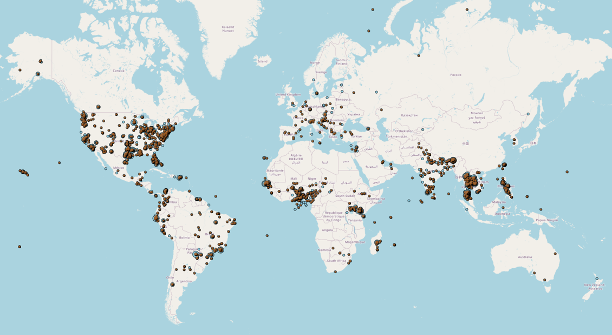News - GLOBE Observer
Student Interns Publish GLOBE Research

High school interns Jay Nimbalkar (left), Christopher Sun
(center), and Ravnoor Bedi (right) published their GLOBE research in
IEEE Explore in 2023.
When you submit data to GLOBE through the GLOBE Observer app, it goes to a public database where your observations are available for anyone worldwide to do research. Those researchers include students such as Christopher Sun, Jay Nimbalkar, and Ravnoor Bedi. The three high school students came together as a research team in the 2022 NASA STEM Enhancement in the Earth Sciences (SEES) Virtual High School Internship Program where they worked under the mentorship of Dr. Russanne Low, the science lead for GLOBE Mosquito Habitat Mapper.
The three teens used deep learning (a type of machine learning) to map the relationship between the density of mosquito populations reported in GLOBE mosquito habitat data in the United States, elevation, and temperature and rainfall. They then evaluated the trends in historic rainfall and temperature during summer months to forecast potential weather conditions in 2050. By adding the 2050 forecast to the first model, they were able to predict future mosquito population density.

Sun, Nimbalkar, and Bedi predicted that Rocky Mountain states—Colorado, Utah, Wyoming, and New Mexico—will likely see the biggest increase in mosquito populations. These states all have high elevations, where mosquitoes are not common now. With rising temperatures, mosquitoes are predicted to have a wider range, including in higher elevation zones that are currently too cold to support a summer mosquito population.
The students presented their work at the prestigious MIT Undergraduate Research Technology Conference in 2022, becoming the first SEES team selected to participate in the competition. They shared their experience in a guest blog for GLOBE Mission Mosquito. They also published their research in IEEE Xplore in January 2023 as part of the conference proceedings.

In their conclusions, Sun, Nimbalkar, and Bedi noted that their work could be improved with more GLOBE data. The more observations that are available in the database, the more researchers of all kinds can identify trends and draw conclusions.
Read the research:
Predicting
Future Mosquito Larval Habitats Using Time Series Climate
Forecasting and Deep Learning
C. Sun, J. Nimbalkar and R. Bedi, "Predicting Future
Mosquito Larval Habitats Using Time Series Climate Forecasting and
Deep Learning," 2022 IEEE MIT Undergraduate Research Technology
Conference (URTC), Cambridge, MA, USA, 2022, pp. 1-5, doi: 10.1109/URTC56832.2022.10002240.
Comments
View more GLOBE Observer news here.








